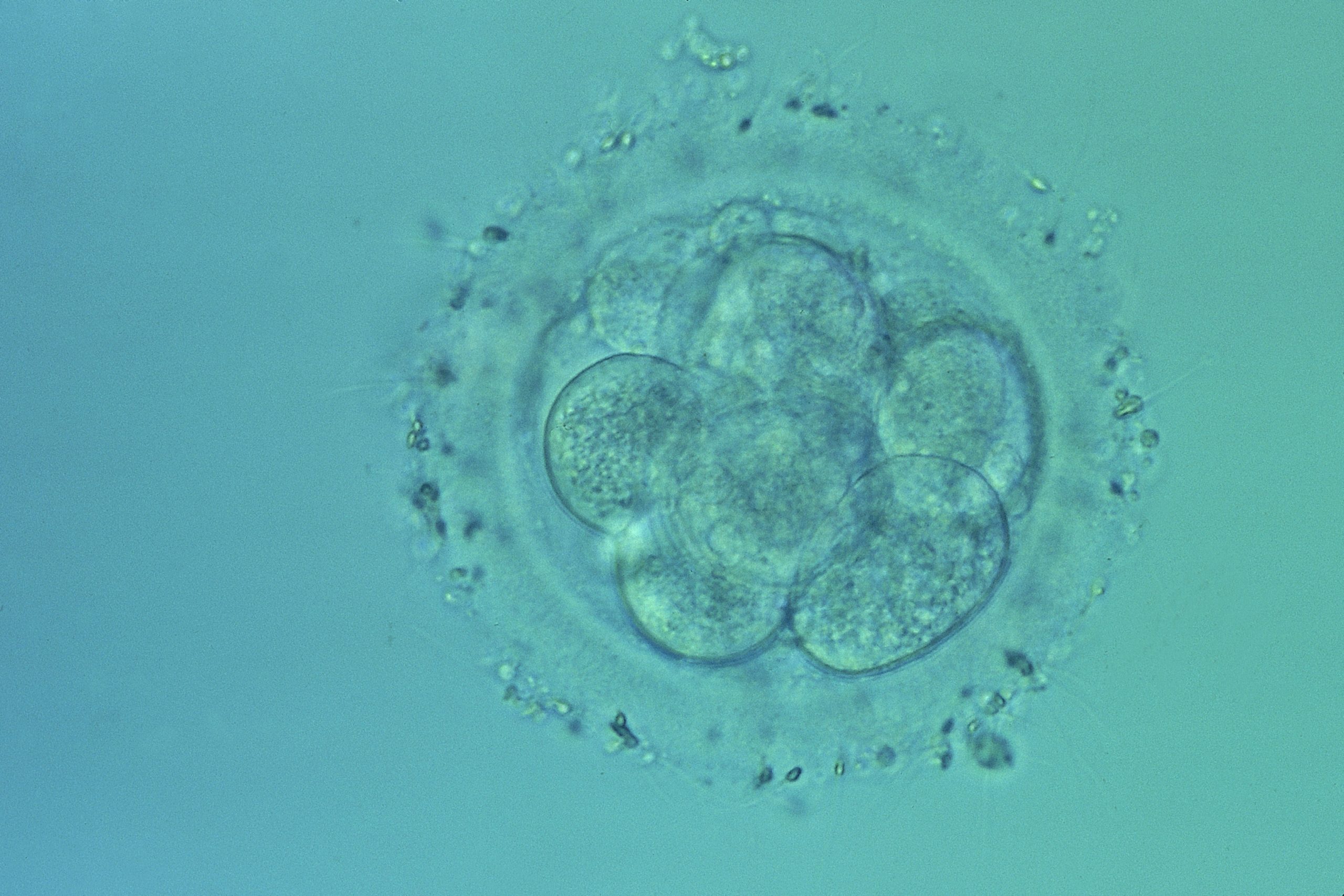G: Cell (2) published the “discovery” from American scientists affirming to have succeeded in creating embryonic stem cells by therapeutic cloning. Can you enlighten us on this announcement, from a scientific and ethic point of view?
A.B: These researchers made on the human what was done with the sheep Dolly: they introduced an already formed nucleus into an oocyte from which was removed the genetic heritage. It deals with cloning, in other words, the creation of a real twin, but with years apart. All the questions and problems emerge again, which raised during the previous decade. These embryos will be created with the only objective to be destroyed to extract from them stem cells after 10 or 15 days of in vitro development. The ultimate fantasy of these manipulations is known: we expect to create clones to generate perfectly compatible (3) “spare parts”.
We also have to mention the women who will be lead to give or sell their oocytes. The process is dangerous, painful and can generate sterility: it requires a strong hormonal treatment and then the introduction of a needle through the vaginal wall to take the oocytes. The fact that white-coated men can propose this to women is still a mystery… As an American blogger colleague mentions it, if men had to give their spermatozoids with the same conditions these researches would still be science fiction! We can be surprised of the current lobbying in favour if the oocyte vitrification which suggests that some people will benefit from the windfall to obtain oocytes at little cost. Some of them are stored and the rest is kept for the research…
G: Two days after, the American company ACT announced the “healing” of a patient by mean of human embryonic stem cells. What do you think about that?
A.B: This “healing” has been announced by Robert Lanza, ACT boss, benefiting from the reflector of the announcement of the first human cloning. But we do not even know what the patient suffer from, nor if both eyes were reached, and above all no evidence was made. If it is confirmed it is obviously a major event because it would be the first patient cured by cell therapy from human embryonic stem cells. However we can note that at this stage there is only one healing out of more than twenty treated patients: we are far from a convincing success and nothing proves that this treatment does not induce complications, what is the objective of the first phase of a clinical trial.
G: Then these two announcements are to be taken with caution, as is often the case with discoveries on the embryo. However, the publications on stem cells do not only concern the embryo, are you aware of announcements in the field of non-embryonic stem cells, o iPS cells?
A.B: Adult stem cells heal thousands of ill patients each year, above all hematopoietic stem cells which are in bone marrow or cord blood. Also we begin to know how to use other cells like mesenchymal stem cells. And several patients received a trachea reconstituted from adult stem cells. But above all there is the great hope represented by iPS cells from Yamanaka which allow modelling a great number of diseases and which would not cause any rejection in a therapeutic frame. Impossible to cite here all the modelling works, but the more recent results deal with the amyotrophic lateral sclerosis (also known as Charcot’s disease or Lou Gherig’s disease) or Down syndrome (4). Concerning clinical trials, Japan is the most advanced country and will launch in the next months the first clinical trial based on iPS cells to heal the same disease than the trial initiated by ACT from embryonic stem cells. This trial will be supervised by Masayo Takahashi from the Centre for Developmental Biology in Kobe, Japan.
G: Do you think the “discovery” on the so-called therapeutic cloning and that of ACT will have an impact on the political scene?
It is of course possible but human cloning remains technically very complex and a lot of oocyte will be needed to perform these experiences. Concerning the “healing” mentioned it is not confirmed to date and for the moment any researcher or politician who is at least slightly serious will be very prudent with this announcement. If it had to be exploited this would express a certain feverish and an outstanding absence of serious argument. In any case this would change nothing to the fundamental objection that an embryo is not a laboratory material and that it should never be sacrificed on the grounds of scientific progress.
1- http://albertbarrois.blogspot.fr/
2- Publication 15th may 2013 “Human Embryonic Stem Cells Derived by Somatic Cell Nuclear Transfer” http://www.cell.com/fulltext/S0092-8674(13)00571-0
3- “The therapeutic cloning is even more serious [than the reproductive cloning] from an ethical point of view”. Dignitas Personæ, §30. La question du clonage reprodutif, pas encore d’actualité, n’est pas abordée ici.
4- see the blog for more details.

